https://ift.tt/34deCa8 Coffee Data Science A surprising find Previously , I have examined Kruve filters using hole analysis. I found the...
Coffee Data Science
A surprising find
Previously, I have examined Kruve filters using hole analysis. I found them to be better than any of the meshed currently out there, and I suspect this is still true. At the time, I only had a few screens. I recently bought the whole set, and I decided to do the same study for entire set.
I also have a unique opportunity to compare the 400um and 500um screens from the original Kruve to the sieves currently being made.
Immediately, I noticed they felt a bit different in terms of the texture of the screens. I compared a few shots and saw an immediate shift in the distribution.
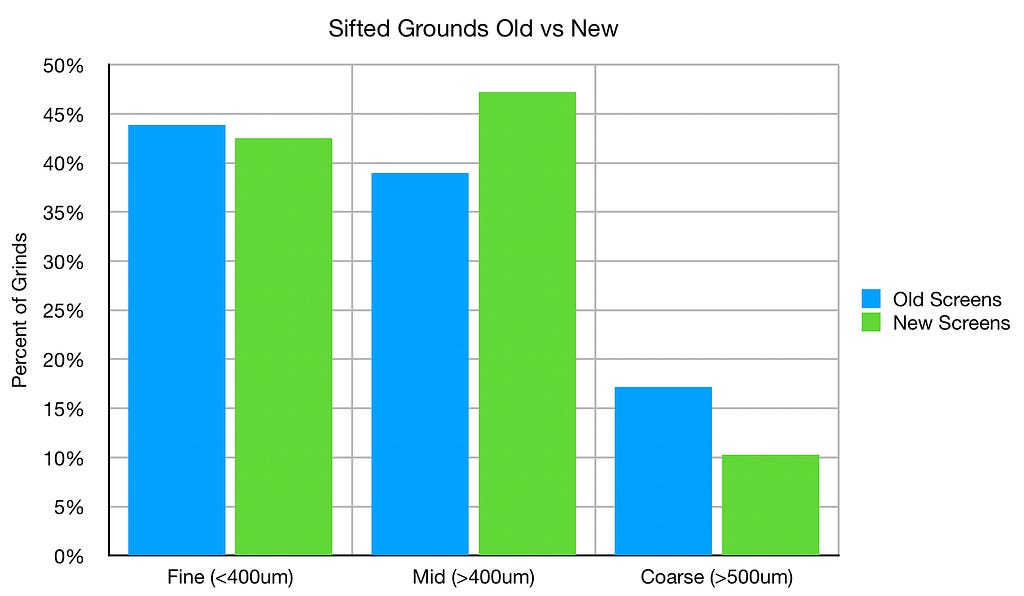
So I first used a microscope to take a look at the screens.
400um
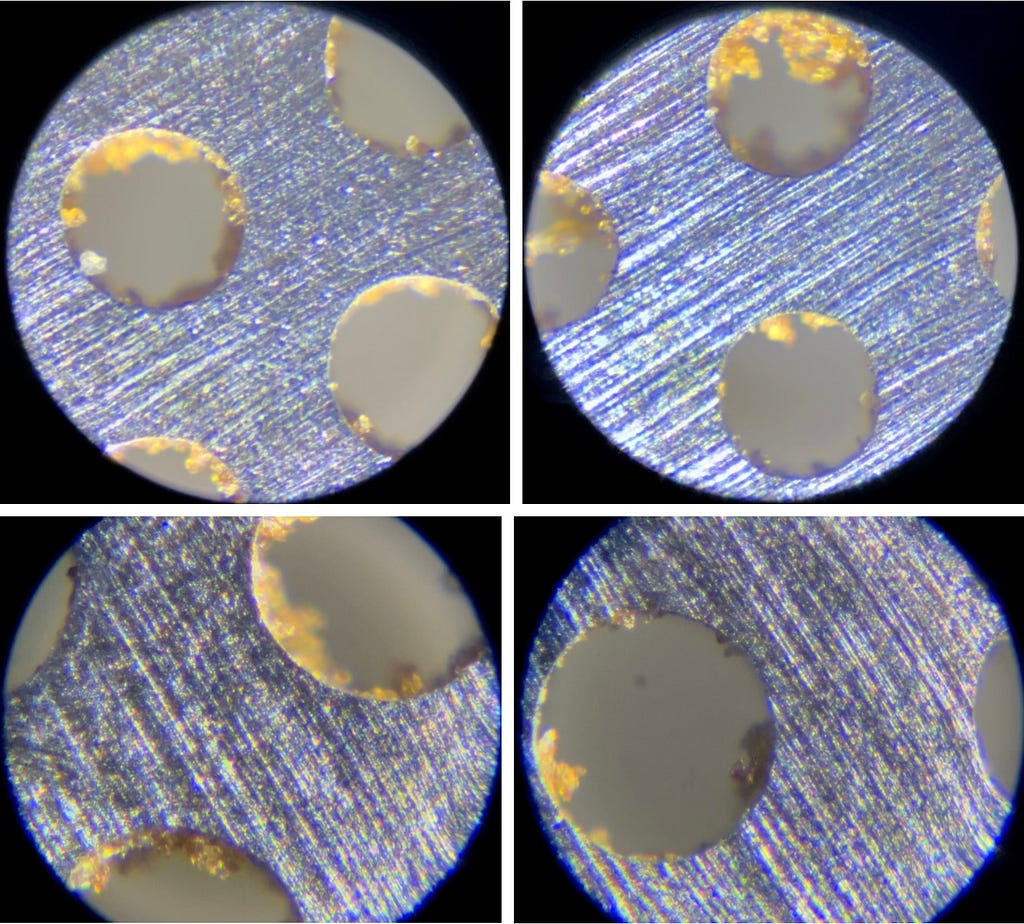
200um
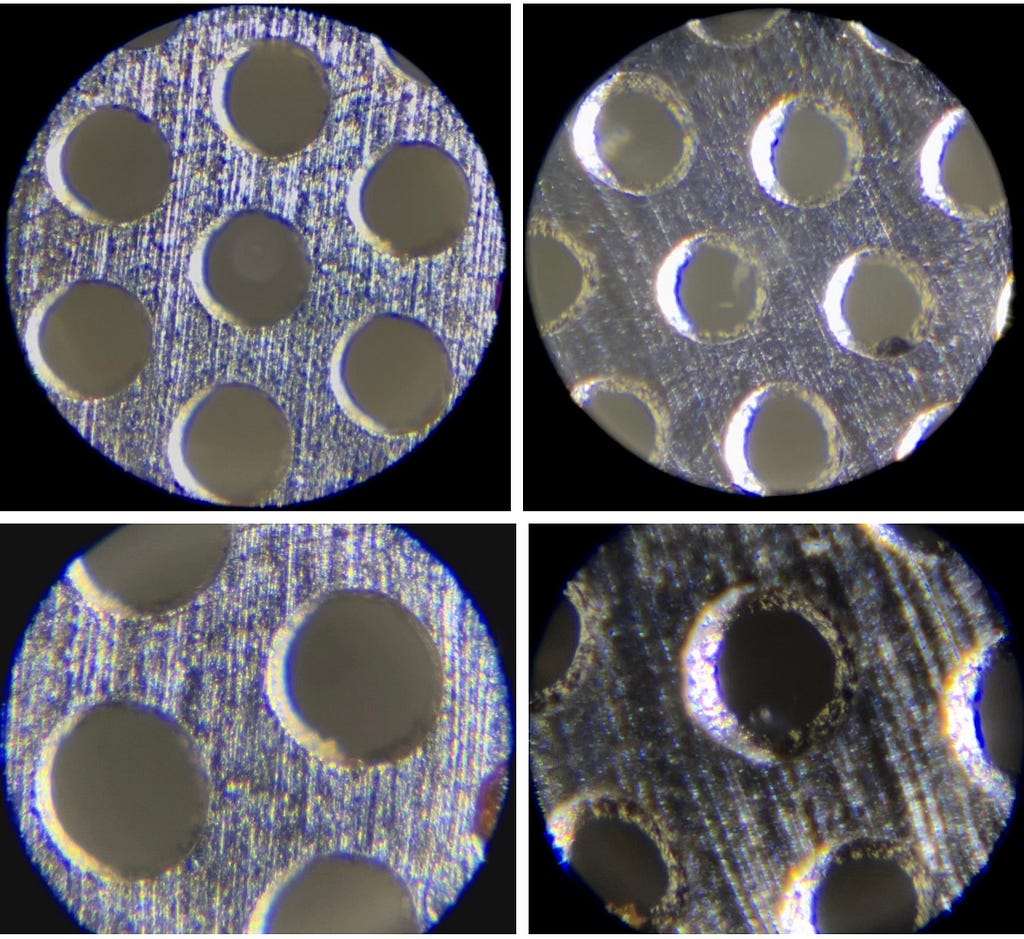
The new holes seemed to have a taper to them, which is good because it is easier for coffee to get through. It seemed the new screen functioned better.
Hole Measurement
I used image processing to measure the holes. I put each screen on an bright screen, and I took an image. I then isolated the screen and measured all the holes knowing the ground truth to convert pixels to real world coordinates.
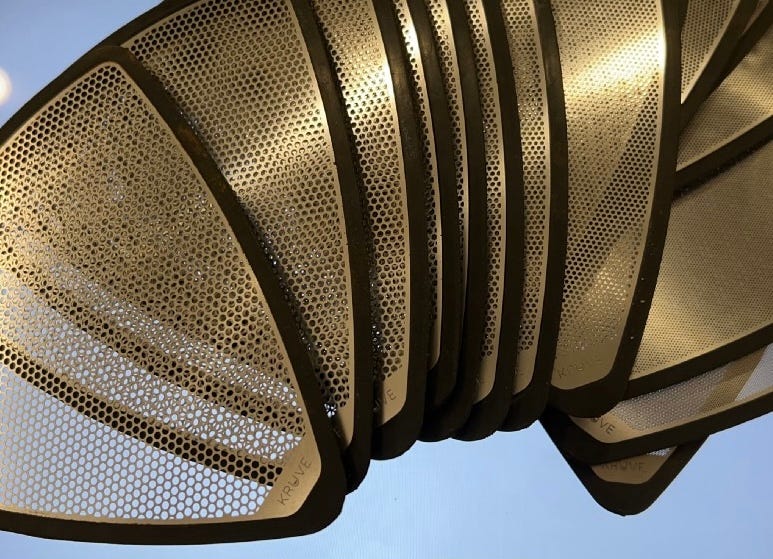
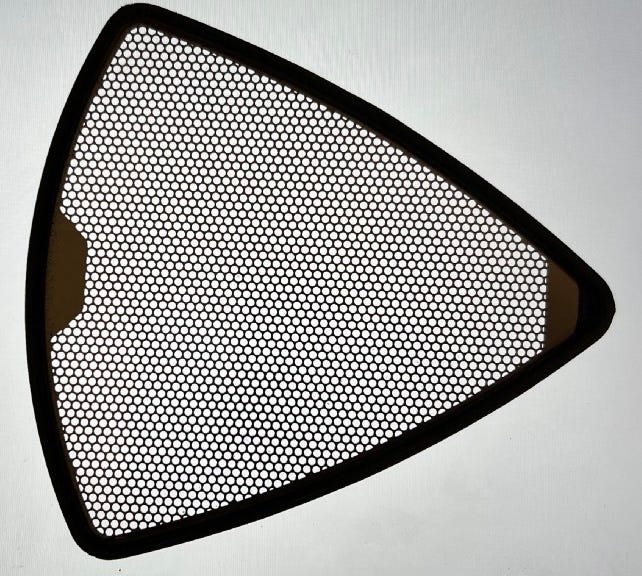
I represented this data in two types of plots: boxplots and colorized distributions. Here is what the boxplot means in terms of how points are distributed:
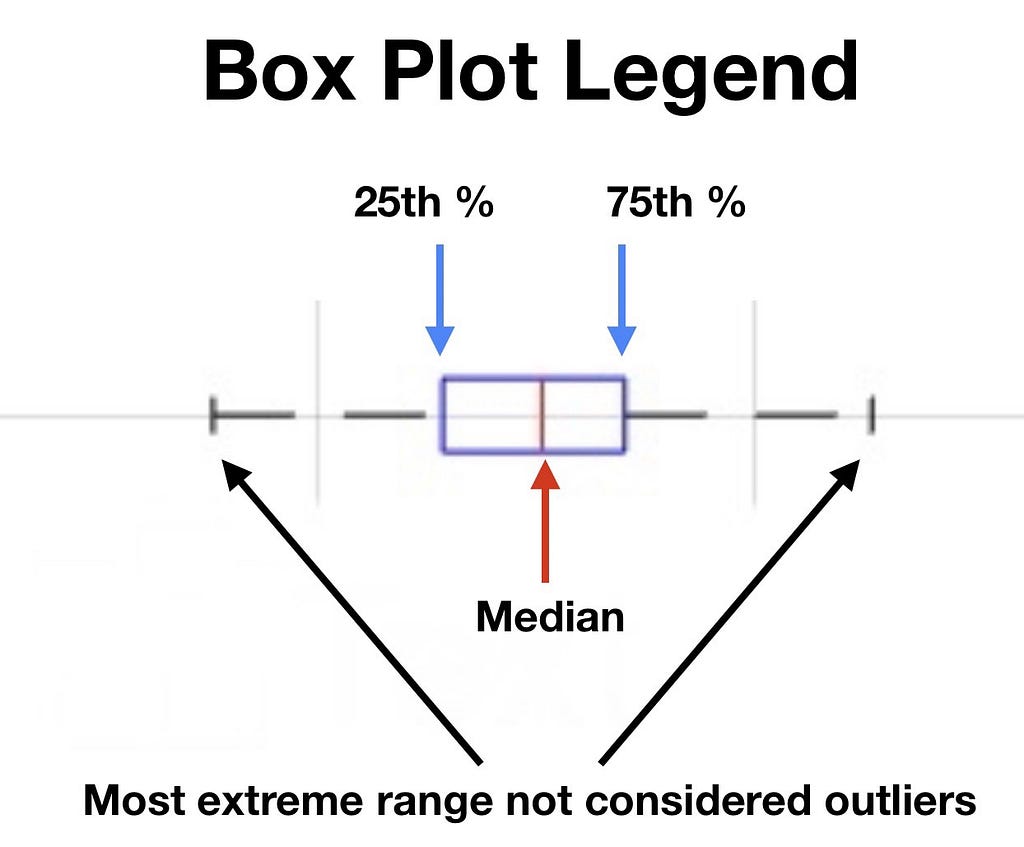
There was a definite shift in the data. This could have been due to a few factors, but considering how linear this trend is, I suspect it is either thresholding or light reflecting in a strange way off of the metal.
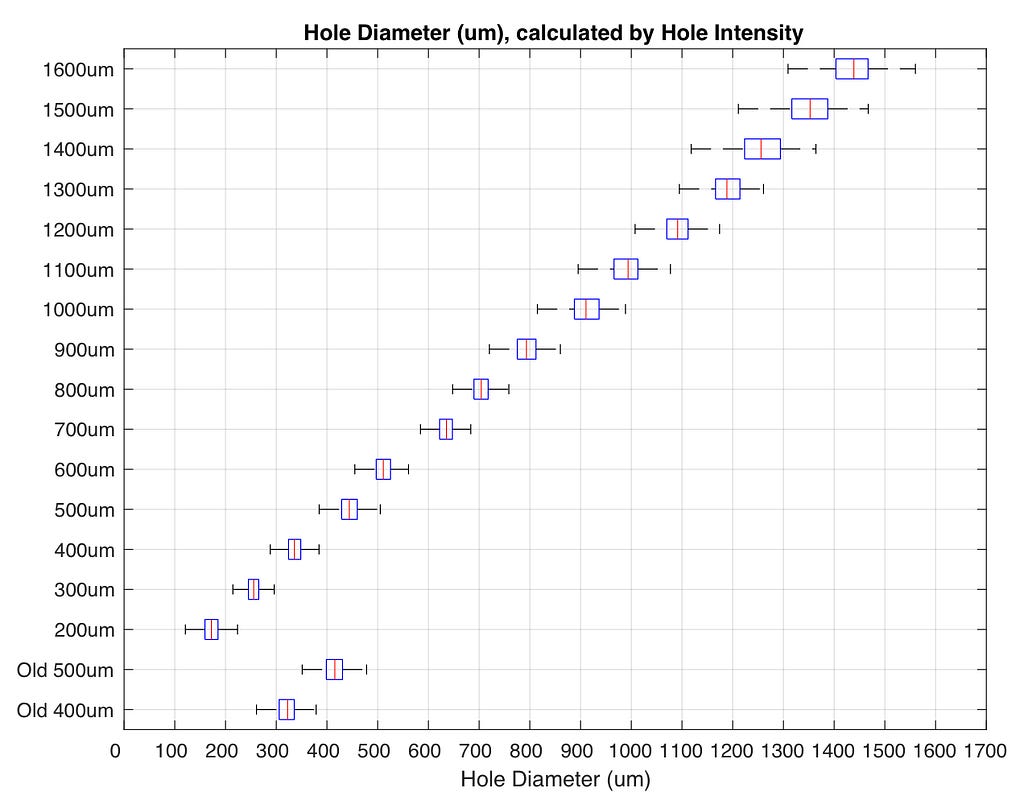
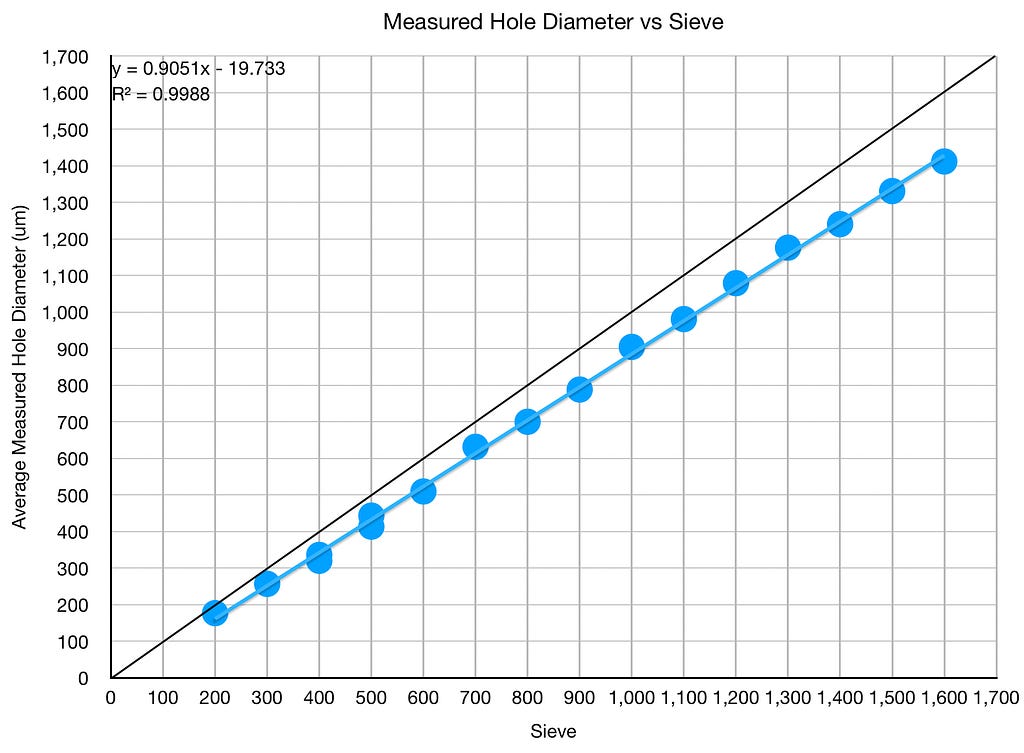
So I adjusted the values using this best fit. There is still a bit of overlap for each screen past. The main bulk of the holes are around the same size, and part of this shift might be due to camera angle.
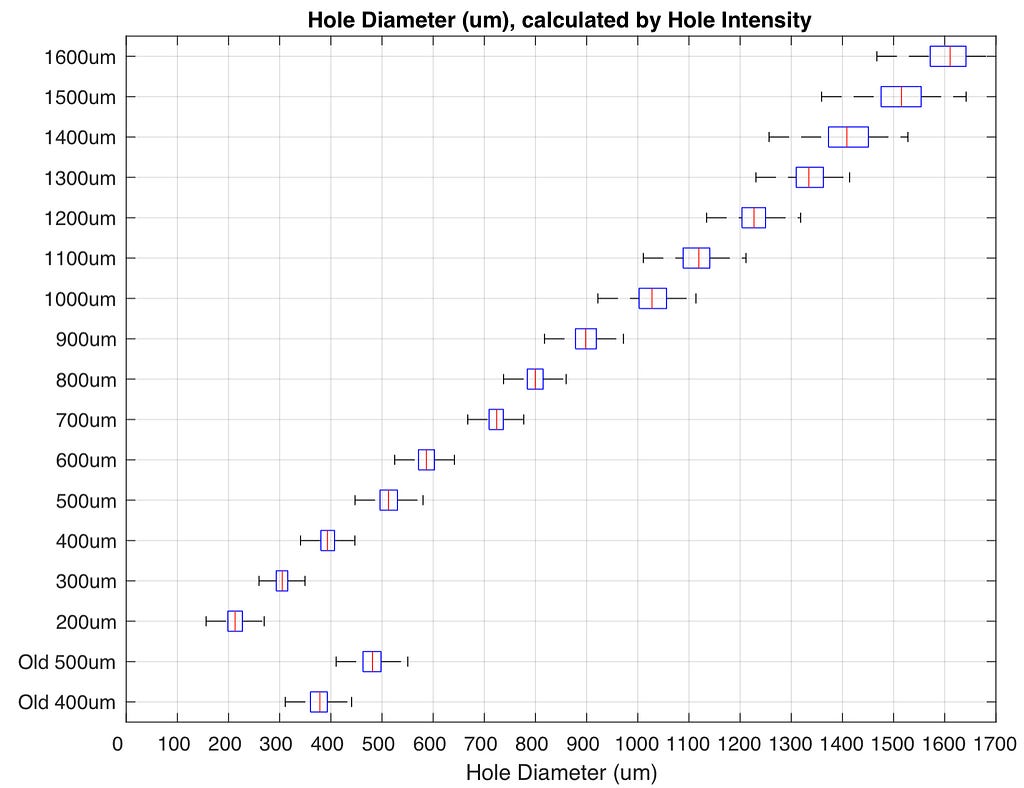
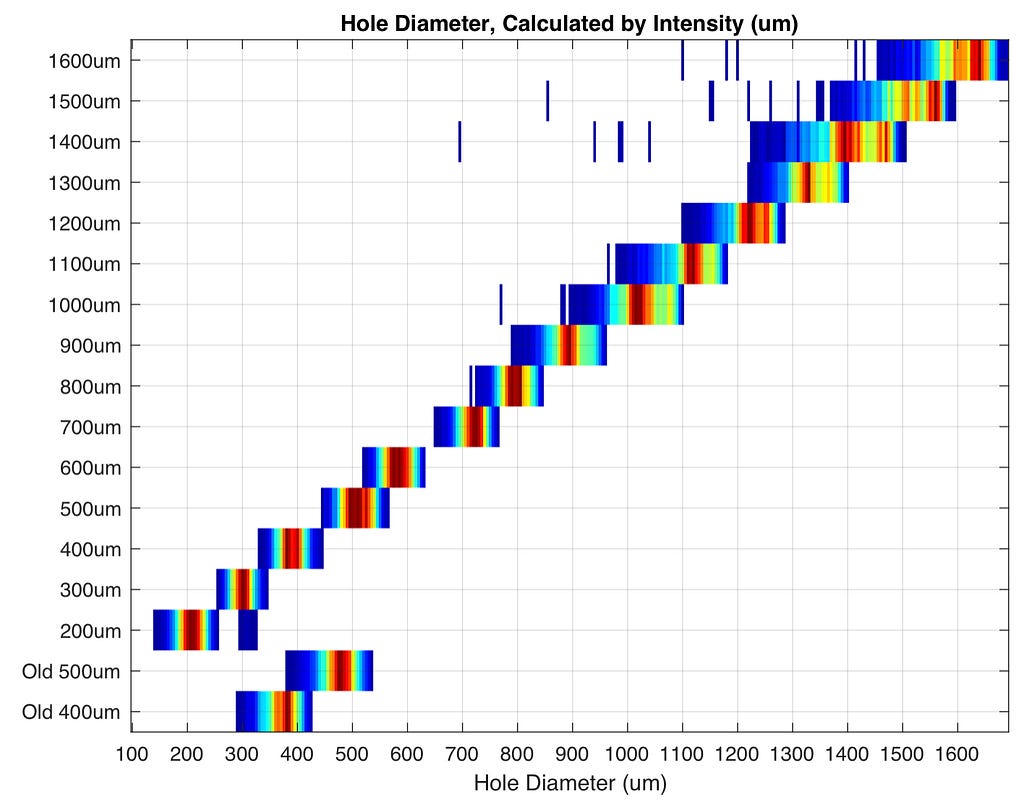
So I made images of the filters with color representing hole size. This false color shows the maximum and minimum hole sizes. There is a strange pattern on many of the screens, and I’m not sure why. It is definitely there though, and I took multiple images to verify it. I don’t think it affected performance, and it could be a reflection off of the surface From where some tape on the screen in the package.
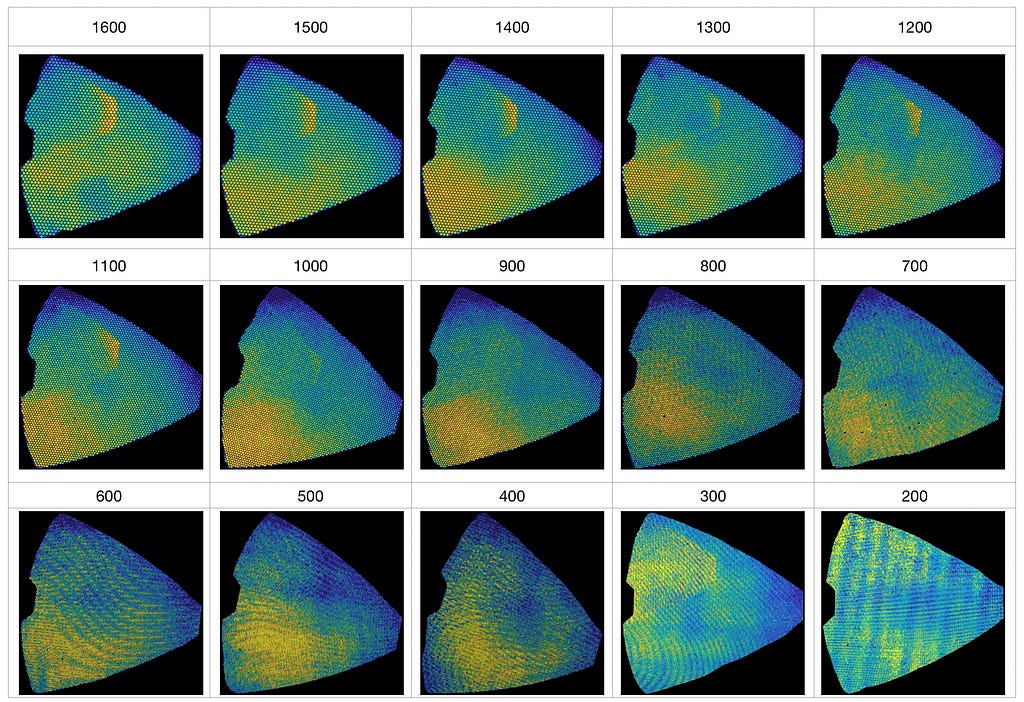
The last 5 screens has strange affects. Some of the affects are not caused by downsampling the images. I put the 600um and 200um screens here for reference. I suspect it is caused by part of the manufacturing process.
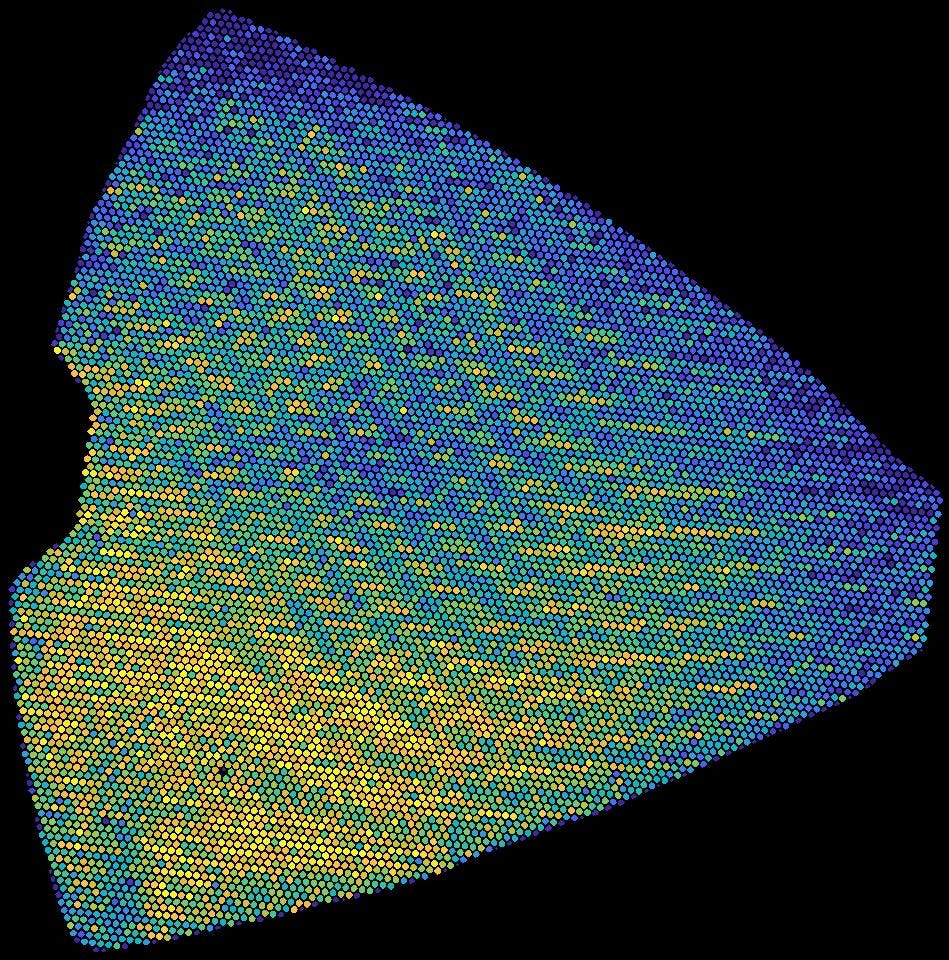
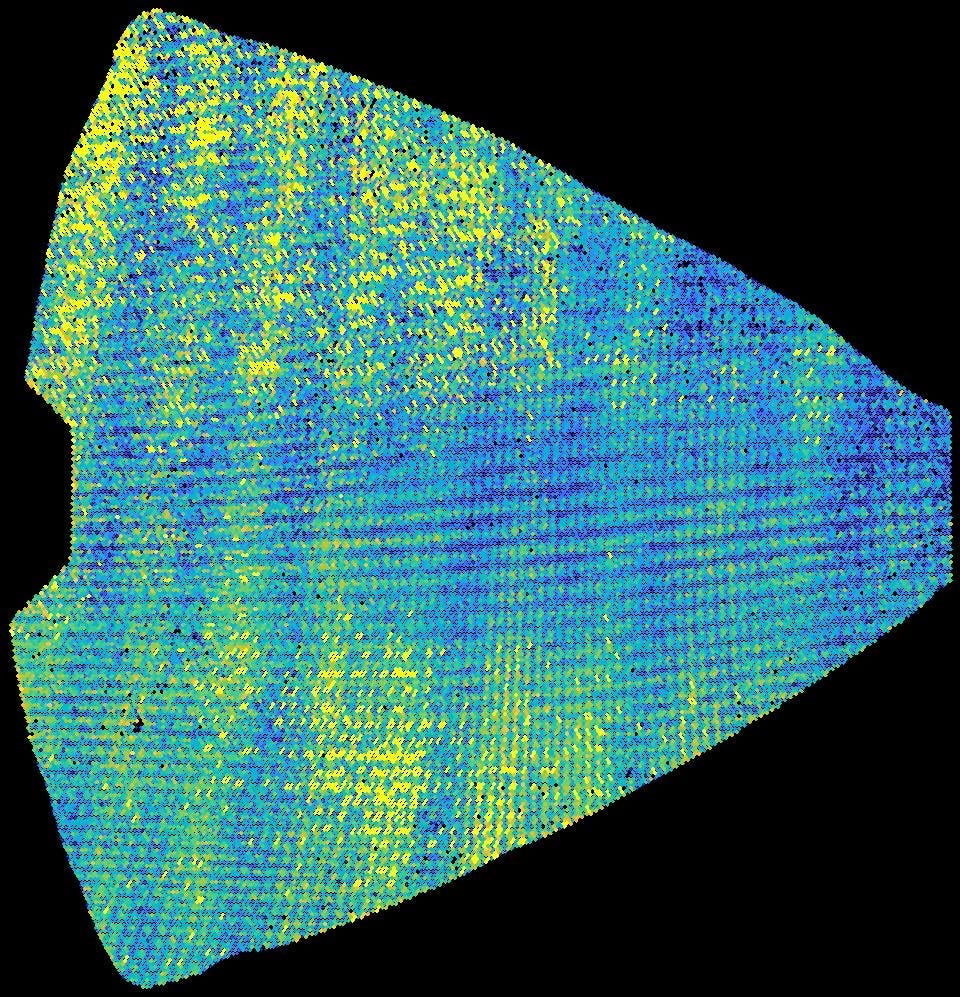
Old vs New
I compared just the old and new screens. The old screens were from when Kruve first did fund raising. These graphs had the linear adjustment in measurement. There is a slight shift towards larger holes for the 400um screens, and there is a greater shift for the 500um to larger holes.
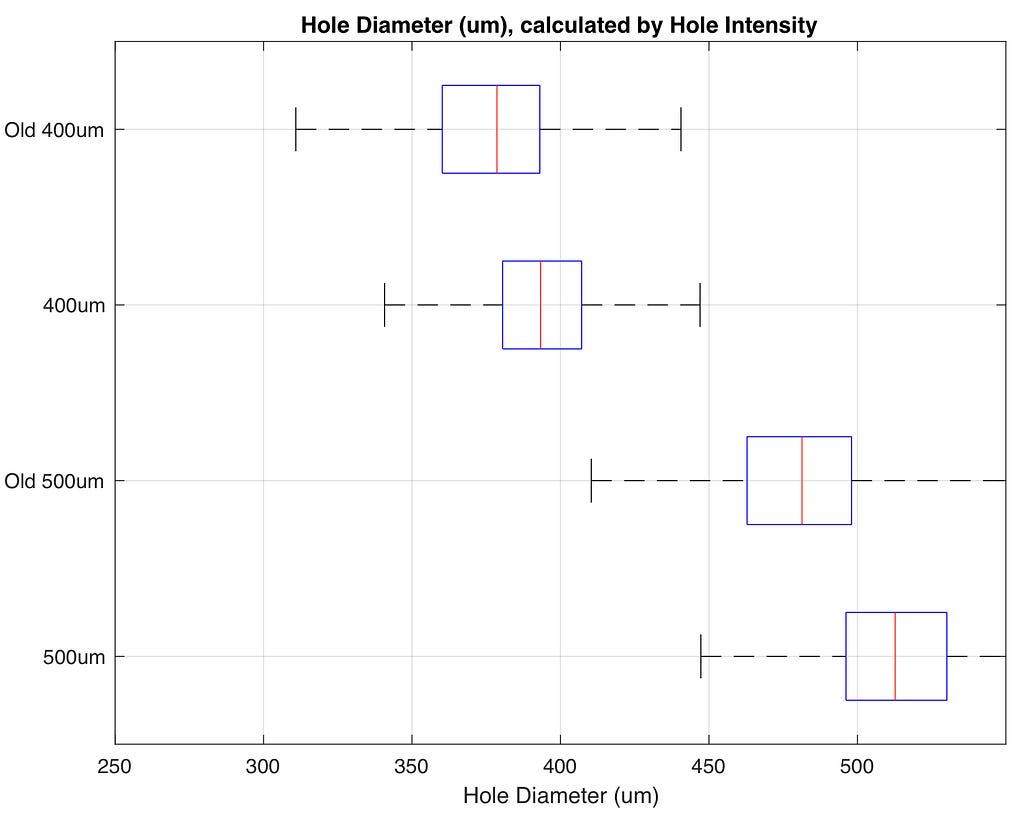
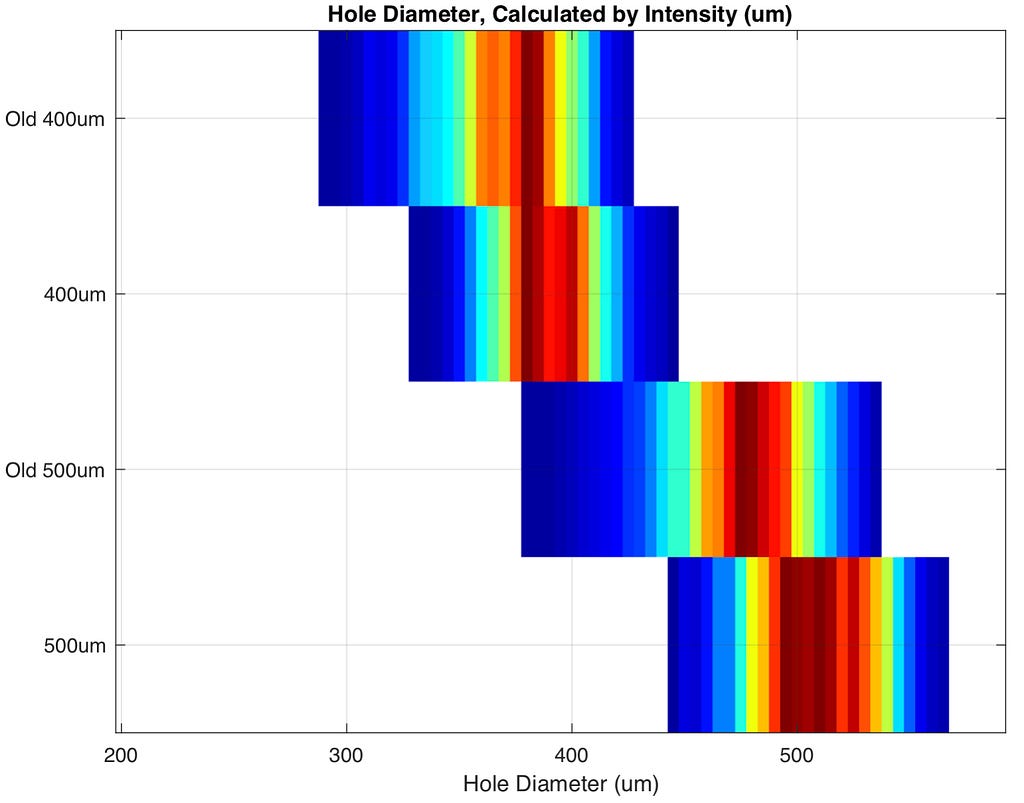
Only the Variation in Hole Size
I looked at only the variation in hole size because the variation in hole size grows a little as the hole size gets larger.
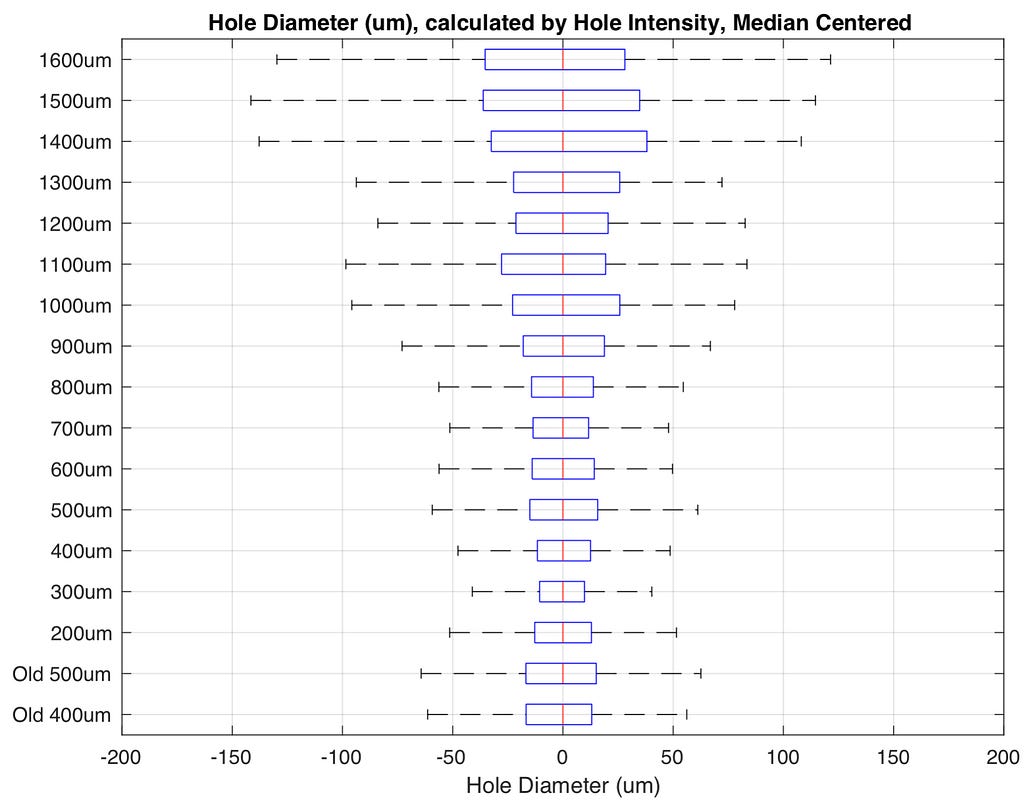
We can track the STD and see a linear trend aside from the first few sieves. This is a good sign that the sieves are well manufactured within a tight quality specification.
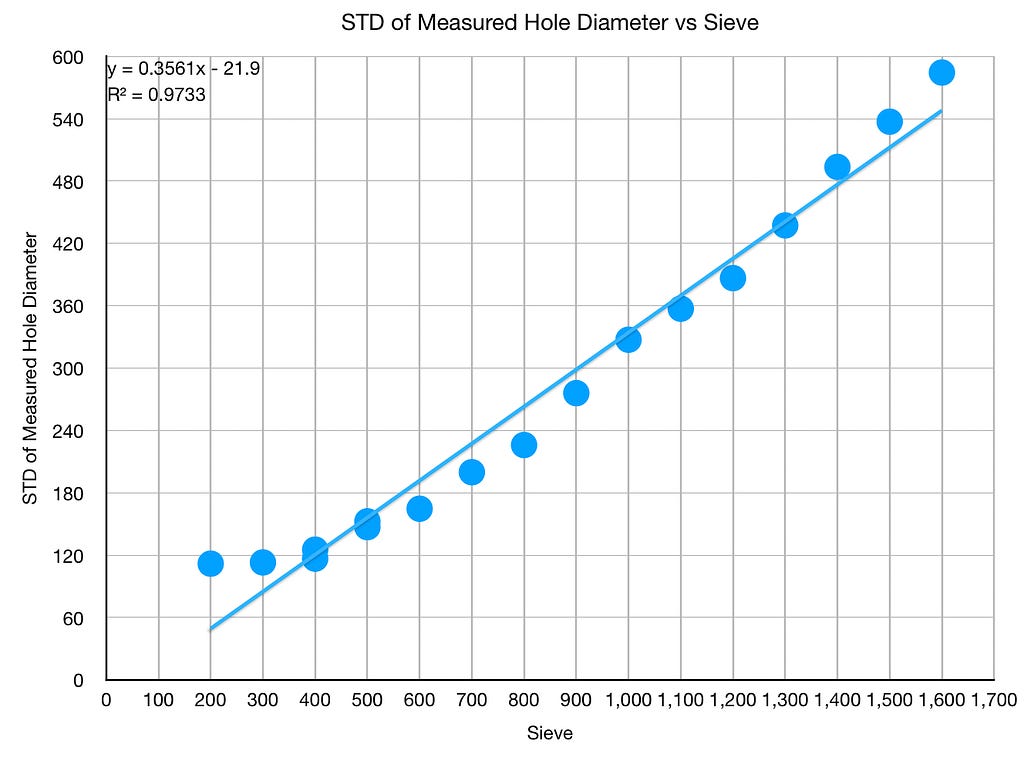
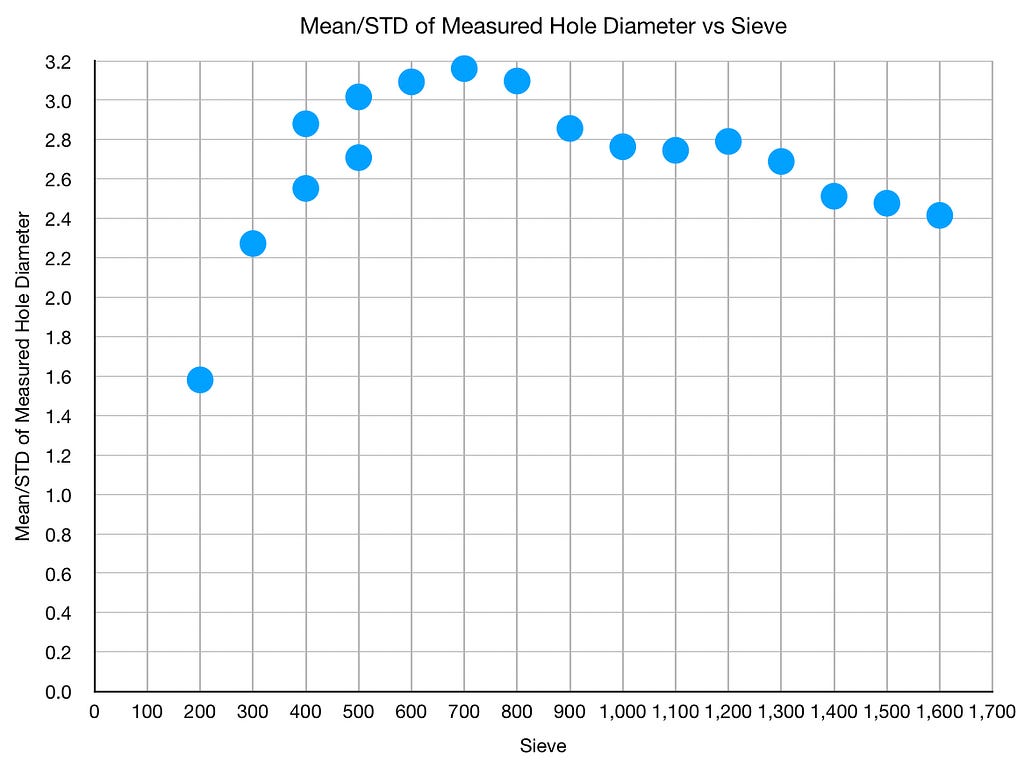
Kruve’s original aim was to help isolate specific grind sizes and allow people to modify the grind distribution. However, the tool has transformed my espresso experience. First, it was making staccato shots, but then I started using the sifter for coffee experiments. Kruve sifters have been very useful for understanding coffee. I have used their sifter multiple times to experiment with and understand coffee.
There is some shift in the distributions going from the old sieves to the new ones, but the sifter still works.
The main takeaway is that these hole distributions can give you a better idea of how much overlap there is between any two filter screens.
I did buy the Kruve at a 30% discount offered by Kruve. To be fair, I have been a big advocate of sifting coffee for a few years, so this shouldn’t be much of a surprise, but I wanted to make sure to be upfront.
If you like, follow me on Twitter, YouTube, and Instagram where I post videos of espresso shots on different machines and espresso related stuff. You can also find me on LinkedIn. You can also follow me on Medium and Subscribe.
Further readings of mine:
Collection of Espresso Articles
A Collection of Work and School Stories
Measuring Coffee Grind Particle Distribution using Image Processing
A Summary of the Staccato Lifestyle
Measuring Coffee Grind Distribution
Espresso Baskets and Related Topics
Transparent Portafilter Experiments
Comparing Kruve Coffee Sifters: New and Old was originally published in Towards Data Science on Medium, where people are continuing the conversation by highlighting and responding to this story.
from Towards Data Science - Medium https://ift.tt/3zewigR
via RiYo Analytics

No comments